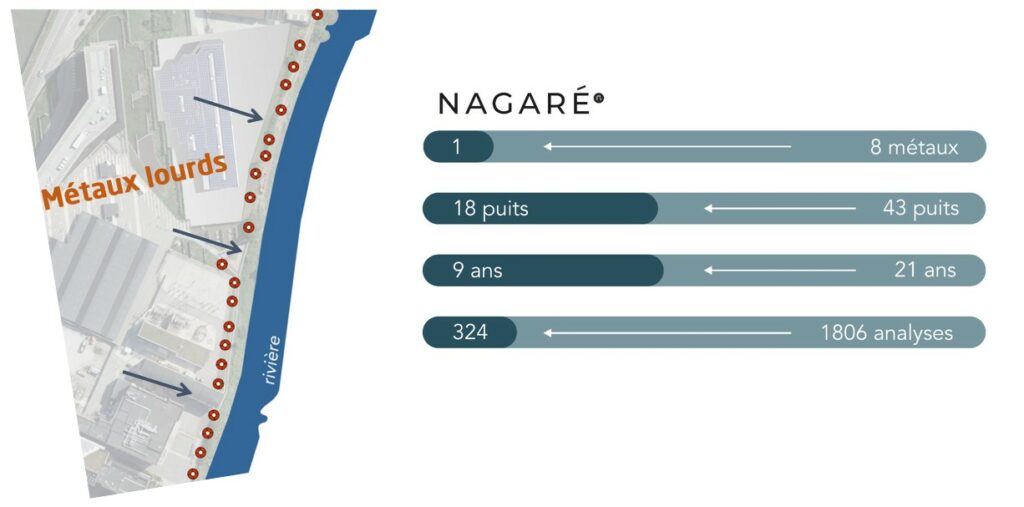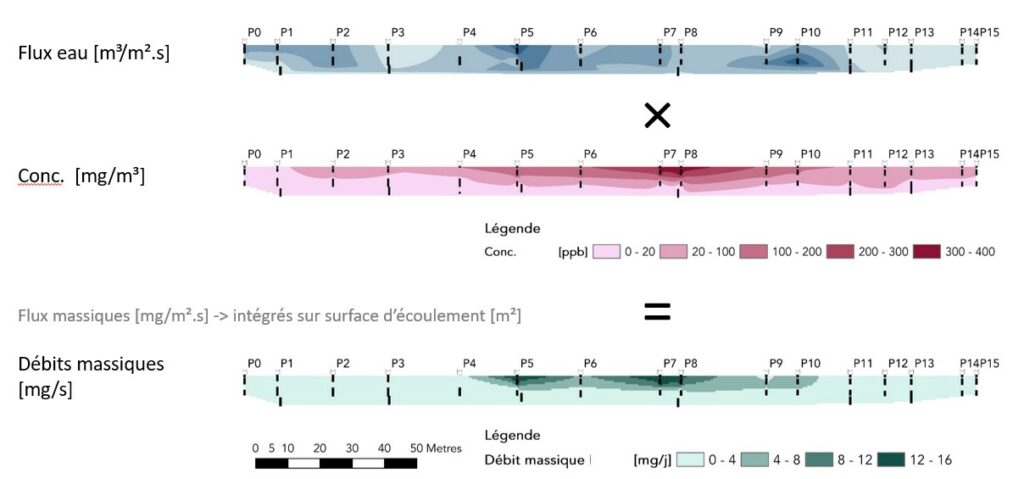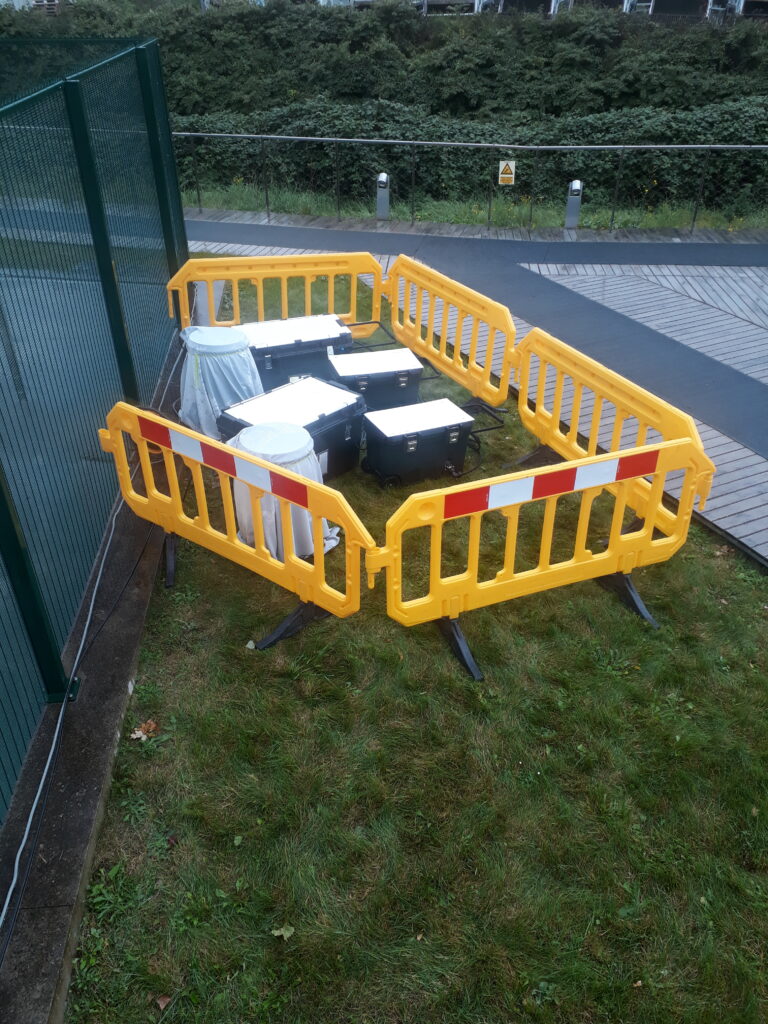Nagaré’s technology has been carried out at an industrial site bordered by a river in the Brussel area, Belgium. The alluvial aquifer is contaminated with 8 heavy metals and poses dispersion risk to the river. Since the concentration-based risk assessment failed to precisely quantify the discharge risk to the river, a cumbersome and costly risk management plan consisting of 43 monitoring wells sampled twice a year and for another 21 years was implemented.

Groundwater flux measurement were performed on 43 monitoring wells, spread as a control plane along the limit of the site and screened at three different depths. It allowed to characterize the spatial heterogeneity of groundwater discharge and quantify the total groundwater flow rate through the site limit and feeding the river.

On the 8 metals present in the groundwater at concentrations higher than the threshold value, only 1 is likely to pose a risk for the river. According to conservative worst-case hypothesis, the total mass discharge for 7 metals is not sufficient to pose a threat to the water quality of the river.
Mass discharge approach also allowed to better analyze the temporal evolution of the strength of the discharge. A henceforth robust trend analysis showed a global decreasing of the total mass discharge of metals since 2014, what was impossible to prove so far based on concentrations only.
Since only one metal poses a risk for the river, trend analysis showed global discharge decreasing and the spatial variability of the metal discharge trough groundwater have been characterized, it was possible to optimize the ongoing monitoring plan. Decreasing the number of monitored wells to focus on those located in high metal discharge zones and limiting the remaining monitoring time led to saving 70% of the total cost.

